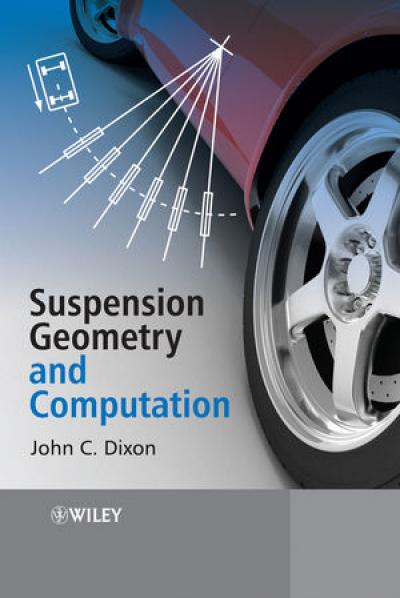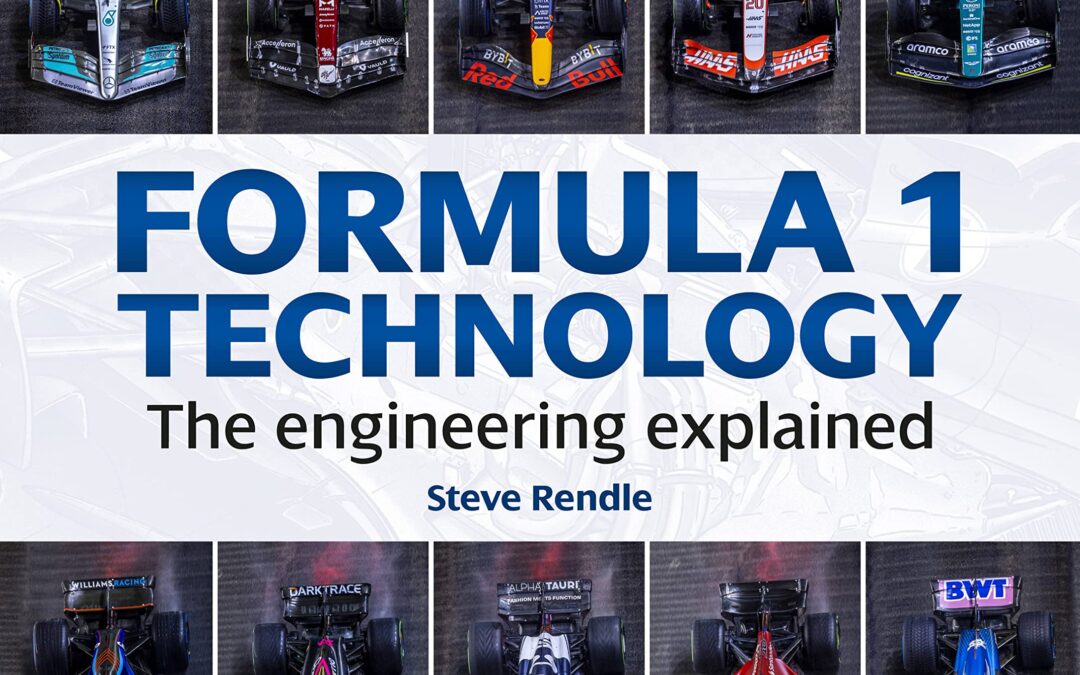
“Revealing suspension geometry design methods in unique detail, John Dixon shows how suspension properties such as bump steer, roll steer, bump camber, compliance steer and roll centres are analysed and controlled by the professional engineer. He emphasizes the physical understanding of suspension parameters in three dimensions and methods of their calculation, using examples, programs and discussion of computational problems. The analytical and design approach taken is a combination of qualitative explanation, for physical understanding, with algebraic analysis of linear and non-linear coefficients, and detailed discussion of computer simulations and related programming methods.
• Includes a detailed and comprehensive history of suspension and steering system design, fully illustrated with a wealth of diagrams
• Explains suspension characteristics and suspension geometry coefficients, providing a unique and in-depth understanding of suspension design not found elsewhere.
• Describes how to obtain desired coefficients and the limitations of particular suspension types, with essential information for suspension designers, chassis technicians and anyone else with an interest in suspension characteristics and vehicle dynamics.
• Discusses the use of computers in suspension geometry analysis, with programming techniques and examples of suspension solution, including advanced discussion of three-dimensional computational geometry applied to suspension design.
• Explains in detail the direct and iterative solutions of suspension geometry.
”

This book explains how modern Formula 1 cars work and demystifies the extraordinary technology they contain.
By meticulously dissecting an F1 car into its constituent components, the author describes the design, engineering and function of every element, enabling the reader to develop a full understanding of how it all comes together to form a competitive package. The text is expertly written to satisfy both the engineering-minded reader as well as any enthusiast of the sport who wants to delve deeper, and supplemented by a superb range of close-up photographs, technical illustrations and diagrams.
- Chassis: design and manufacture; survival cell, fuel tank, impact structures, stiffness.
- Aerodynamics: principles, front and rear wings, turning vanes, sidepods, floor, wheels and their effect, brake ducts, suspension components, diffuser, Drag Reduction System (DRS).
- Suspension, steering and brakes: suspension layout, geometry and adjustments; steering wheel, column and geometry; brake hydraulics, brake-by-wire system, discs, calipers, pads and cooling.
- Power unit: the hybrid era, Internal Combustion Engine (ICE), Energy Recovery System (ERS), fuel.
- Transmission: clutch, gearbox, differential, driveshafts.
- Electronics: starting system, Electronic Control Unit (ECU), sensors, radio and data communications, cockpit display, cameras.
- And more: wheels and tyres; hydraulic system; safety equipment; cockpit controls.
- Chapters about car design and set-up.
- Use of analysis and simulation techniques such as computational fluid dynamics (CFD), wind-tunnel testing and rig testing. All F1 fans will find this book a deeply rewarding companion to enhance their appreciation of the sport.
All F1 fans will find this book a deeply rewarding companion to enhance their appreciation of the sport.

The field of aerodynamics has had an increasingly significant effect on performance enhancement over the past 50 years. Competition Car Aerodynamics 3rd Edition continues the practical, hands-on approach of its popular predecessors to cover all aspects of motorsport aerodynamics, with more CFD and wind tunnel project material and case studies. Author Simon McBeath tackles aerodynamic theory in a comprehensive, yet comprehensible, way with his unprecedented access to state of the art computational fluid dynamics (CFD) techniques. McBeath also explores aerodynamics with the MIRA full-scale wind tunnel in the UK. Photographs, graphs, CFD-generated images, and wind tunnel data–much of which has appeared in the successful Aerobytes series in Racecar Engineering–are used to explain with unrivaled clarity how aerodynamic performance benefits are obtained in practice. With case studies from Formula 1, sports prototypes, Formula 3, GT and saloon cars, club single seaters, and karts, this book will appeal to anyone, whether a designer, competitor, student, or armchair enthusiast, wishing to gain an understanding of aerodynamics, and how it can benefit the performance of all types of competition cars.





